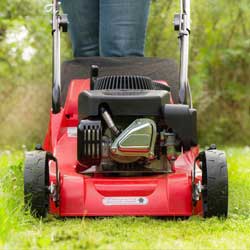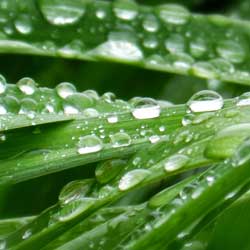If you have a lawn then you need to mow. If you need to mow then you may as well do it right. Here are the basics:
- Service your lawn mower in the fall, after your last cut, so that you start the next season right. Change the oil, drain the gas, replace the spark plug and air filter, lubricate the throttle cord and sharpen the blade.
- Before your first cut of the spring season, fill your tank with gas and adjust your wheel height. Cool-season grasses should generally be cut at a height of 3 to 3 ½ inches. Never remove more than 1/3 of the plant. This longer height will require that you mow more frequently but it will ensure a stronger root system, help maintain soil moisture and will greatly reduce weed competition.
- Only mow a dry lawn. Cutting a wet lawn is a sure way to spread disease. The best time of the day to do this is in the evening. Early in the morning, after the dew has dried, is the second best time. Mowing in the heat of the day will cause your turf grass to go into shock.
- Before you start your mower, clear all objects from the lawn. This includes toys, lawn furniture, trash, fallen branches, stones and anything that would cause you to stop and restart the mower. Keep your eye out for anything that is a hazard, items that may jam your mower or become projectiles.
- Grass clippings are loaded with Nitrogen, just what your lawn needs to stay healthy. Leaving them where they lie can reduce your fertilizer use by as much as 25%. Spread them out so that they don’t become anaerobic.
- Always remember to keep your mower blades sharp. You may need to resharpen them during the growing season. Dull blades rip and tear at the grass and create an environment conducive to the spread of disease.
- Change directions each time you mow. Mowing causes the grass to lie over. Alternating your direction will correct this problem.
- Did you know that dirt and debris are the main cause of lawn mower engine failure? Always take a few moments after mowing for some preventative maintenance. Grab an old rag and wipe down your equipment including air vent grates.








